Digital Poster
Aging & AD: Connectivity
ISMRM & ISMRT Annual Meeting & Exhibition • 10-15 May 2025 • Honolulu, Hawai'i

 |
Computer Number: 81
4206. High
susceptibility is associated with the disruption of white matter
tracts and network integrity in AD mouse model
E. Hunter, L. Zhan, H. Aizenstein, M. Wu, B. Iordanova
University of Pittsburgh, Pittsburgh, United States
Impact: The increase in susceptibility associated with
compromised white matter integrity in Alzheimer’s disease
highlights the critical impact of white matter dysfunction
on brain function and provides researchers and clinicians
quantitative insights to guide future research, targeted
therapies, and treatments.
|
|
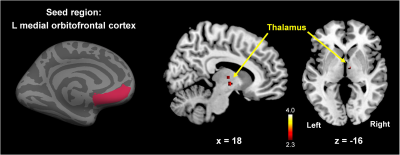 |
Computer Number: 82
4207. Altered
Brain Morphology and Functional Connectivity in Postmenopausal
Women: Whole-Brain and Thalamic Subnuclei Analysis with fMRI
G-W Kim, K. Park, G-W Jeong
Chonnam National University, Gwang-ju, Korea, Republic of
Impact: This study highlights specific brain regions
affected by menopause, providing insights into the neural
basis of increased neurodegenerative risk in postmenopausal
women. These findings may guide future research on
hormone-related interventions and inform clinicians on
targeted treatments for cognitive health.
|
|
 |
Computer Number: 83
4208. Structural
Networks associated with gait speed in older adults with and
without MS.
S. Nayak, M. Wagshul, R. Holtzer
Albert Einstein College of Medicine, Bronx, United States
Impact: The association of GM structural covariance
networks in subcortical brain regions among a sample of
older adults to cognitive measures provides insights into
research in brain – behavior associations in the broad field
of neuropsychology and aging.
|
|
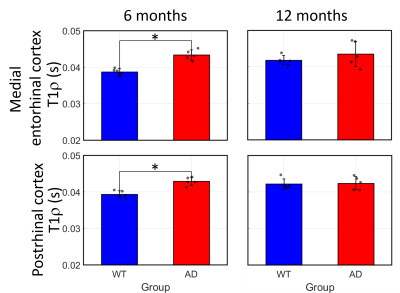 |
Computer Number: 84
4209. Adiabatic
T1ρ and MB-SWIFT resting-state fMRI for Monitoring Alzheimer’s
Disease Progression in TGF344 Rats
L. Wu, S. Ponticorvo, D. Koski, D. Idiyatullin, W. Low, G.
Metzger, S. Mangia, S. Michaeli
University of Minnesota, Minneapolis, United States
Impact: These findings highlight the potential of
adiabatic T1ρ and resting-state fMRI as valuable tools in
evaluating Alzheimer’s disease progression, paving the way
for future research focused on early diagnosis and
intervention strategies.
|
|
 |
Computer Number: 85
4210. Brain
networks topology and dynamics capture neuropsychological
heterogeneity in mild cognitive impairment
A. Monteverdi, S. Manzon, M. Cotta Ramusino, F. Conca, A.
Redolfi, E. Lupi, M. De Grazia, R. Lorenzi, M. Gaviraghi, L.
Farina, A. Costa, A. Pichiecchio, S. Cappa, F. Palesi, C.
Gandini Wheeler-Kingshott, E. D'Angelo
IRCCS Mondino Foundation, Pavia, Italy
Impact:
With its high correlation with neuropsychological scores, the subject-specific portrait of mild cognitive impairment patients, obtained combining virtual brain modelling and graph theory analysis, can contribute to the development of individualized early intervention. |
|
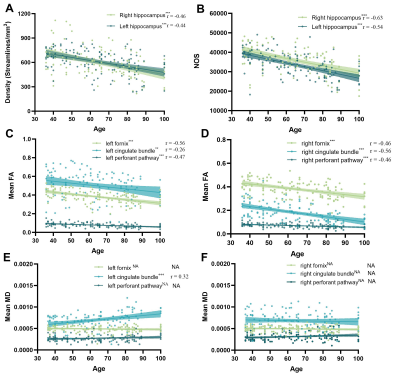 |
Computer Number: 86
4211. Age-related
hippocampal connectivity alterations in HCP-Aging dataset
H. Pang, C. Li, Z. Sun, Z. Liang, J. Zhang, Y. Ge
New York University Grossman School of Medicine, New York, United States
Impact: These findings support the observed hippocampal
volume changes in age-related cognitive decline, and provide
insights into the 'hippocampal disconnection' theory,
highlighting the importance of the integrity of
hippocampal-centered white matter network associated with
aging.
|
|
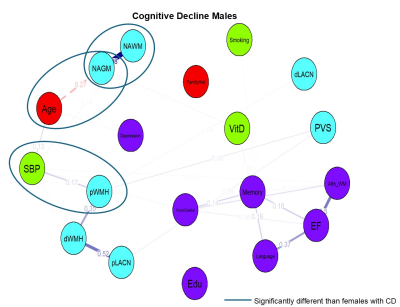 |
Computer Number: 87
4212. Sex-specific
relationships among risk factors in those with Mild Cognitive
Impairment or Alzheimer’s disease and healthy controls
B. Intzandt, J. Ramirez, B. Lam, M. Masellis, O.
Researchers, C. Scott, G. Einstein, L. Bherer, S. Black
Sunnybrook Research Institute, Toronto, Canada
Impact: This study identifies sex-specific risk factor
networks in cognitive decline, suggesting tailored
intervention points. By pinpointing unique biomarkers and
relationships, particularly among modifiable factors, these
findings advance the path toward precision medicine in
dementia care.
|
|
 |
Computer Number: 88
4213. Phenotyping
Superagers Using Machine Learning Algorithms on Whole Brain
Connectivity Resting-State fMRI Studies
L. L. de Godoy, W. Min, D. Ribeiro de Paula, A.
Studart-Neto, N. Green, P. Arantes, K. Taverna Chaim, N. C.
Moraes, M. Sanches Yassuda, R. Nitrini, C. da Costa Leite,
A. Soddu, S. Bisdas, J. Panovska-Griffiths
Perelman School of Medicine at the University of Pennsylvania, Philadelphia, United States
Impact: Our advanced analytical techniques validate
existing findings and give new insights into sensory
cortices that may be important for superagers’ comprehending
cognitive resilience. This could be helpful to guide future
targeted interventions to optimize the efficiency of
specific brain regions.
|
|
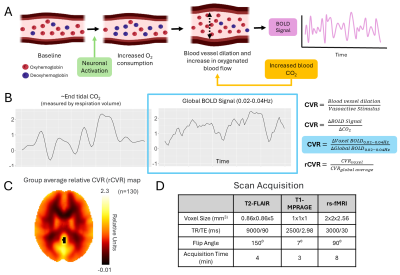 |
Computer Number: 89
4214. Cerebrovascular
reactivity in white matter related to global white matter
hyperintensity burden and functional connectivity
C. Hsu, Q. Lee, A. Fan
University of California - Davis, Davis, United States
Impact: This study provides mechanistic insight into how
WMH burden affects cerebrovascular reactivity (measured by
resting-state functional MRI) and functional connectivity in
brain injury. This knowledge can help identify brain
networks vulnerable to cerebrovascular injury and inform
prevention of cognitive decline.
|
|
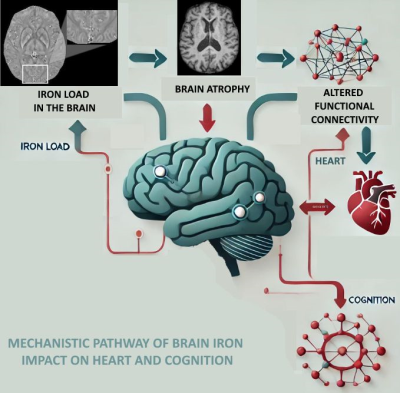 |
Computer Number: 90
4215. Mechanistic
Links of Insular Cortex Iron to Cardiac Function, Brain Atrophy,
Connectivity and Cognition in Women with Microvascular
Dysfunction
A. HAS SILEMEK, J. Wei, J. Wertheimer, Y. Xie, D. Li, M.
Gonzales, O. Dumitrascu, M. Nelson, S. Kremen, Z. Tan, C. N.
Bairey Merz, W. Gao, P. Sati
Cedars Sinai Medical Center, Los Angeles, United States
Impact: This study identifies insular-cortex iron as a
potential biomarker linking cardiac and cognitive function
in CMD. These findings could guide future interventions
targeting brain iron to mitigate cardiovascular and
cognitive risks, prompting new research on heart-brain
interactions in women’s health.
|
|
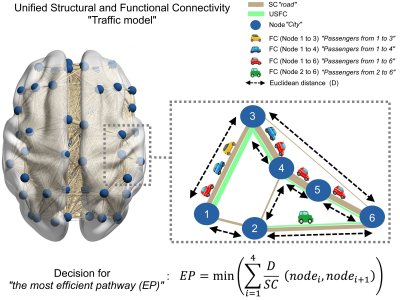 |
Computer Number: 91
4216. The
Brain’s First “Traffic Map” via Unified Structural and
Functional Connectivity: Application to Women with Microvascular
Dysfunction
A. HAS SILEMEK, J. Wei, J. Wertheimer, Y. Xie, D. Li, O.
Dumitrascu, M. Nelson, S. Kremen, Z. Tan, C. N. Bairey Merz,
P. Sati, W. Gao
Cedars Sinai Medical Center, Los Angeles, United States
Impact: The USFC model links brain connectivity with
cardiovascular and cognitive health, identifying pathways
associated with increased risks of pathological aging and
Alzheimer's disease. This study facilitates targeted
interventions and improves early diagnostic strategies,
providing new promise for vulnerable populations.
|
|
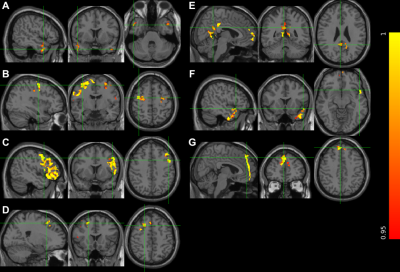 |
Computer Number: 92
4217. Age-associated
alterations of brain networks using dynamic ASL
Y. Zhang, S. Chen, Z. Zhang, E. Riley, A. Anderson, E.
DeRosa, W. Dai
State University of New York at Binghamton, Binghamton, United States
Impact: The rsFC of DASL may offer additional knowledge
about the aging brain in the healthy adults and increase our
insight into the neural basis of neurodegenerative disease.
|
|
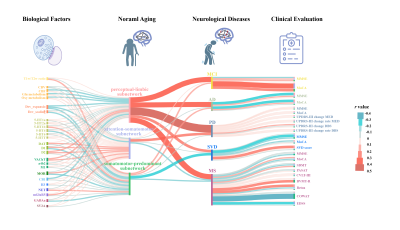 |
Computer Number: 93
4218. Normal
Aging-Related Brain Morphological Connectivity Network Linked to
Multiple Neurological Diseases
Y. Li, Z. Zhuo, Y. Liu, j. Weng
Beijing Tiantan Hospital, Beijing, China
Impact: This understanding may provide new insights for
improving clinical disease management by evaluating aging
effects.
|
|
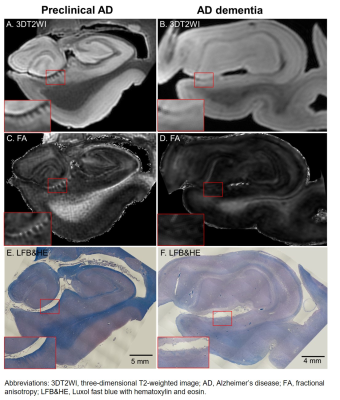 |
Computer Number: 94
4219. Quantification
of perforant path fiber degeneration using ex vivo 11.7T MRI
along severities of neurofibrillary tangles in the entorhinal
cortex
Y. Uchida, Z. Hou, L. Gomez-Isaza, M. Luongo, J. Troncoso,
M. Miller, S. Mori, K. Oishi
Johns Hopkins University, Baltimore, United States
Impact: Myeloarchitectonic features of the perforant
pathway, identified using 11.7 MRI in postmortem human brain
tissues, were associated with neuropathological changes
along the AD continuum, reflecting neurodegeneration of
early AD pathogenesis.
|
|
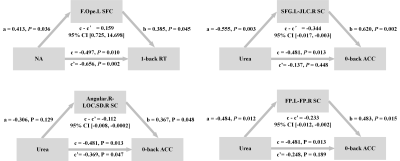 |
Computer Number: 95
4220. Effects
of Hemodialysis on Structural-Functional Coupling of Working
Memory-Related Networks in End-Stage Renal Disease Patients
J. Mu, S. Ma, X. Xu, Z. Luo, H. Yuan, X. Zhu, P. Li, W. Gu,
Y. Liu, M. Zhang
First Affiliated Hospital of Xi’an Jiaotong University, Xi'an, China
Impact: Hemodialysis partially restores cognitive
function in ESRD patients, but some brain regions'
connectivity remains disrupted. Early intervention on urea
and sodium balance is crucial for better cognitive
preservation.
|
|
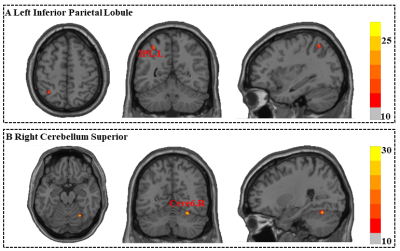 |
Computer Number: 96
4221. Acupuncture-Induced
Changes in Locus Coeruleus Connectivity and Memory Improvement
in Patients with Amnestic Cognitive Impairment
l. hu, H. Lyu, L. Chen, X. Li, H. Qin, J. Xu
Guangzhou University of Chinese Medicine, Shenzhen, China
Impact: Acupuncture could enhance cognitive function and
immediate recall in individuals with amnestic mild cognitive
impairment. Resting-state functional MRI studies indicate
that verum acupuncture modulated functional connectivity
between the left locus coeruleus and the inferior parietal
lobule and cerebellum.
|
The International Society for Magnetic Resonance in Medicine is accredited by the Accreditation Council for Continuing Medical Education to provide continuing medical education for physicians.